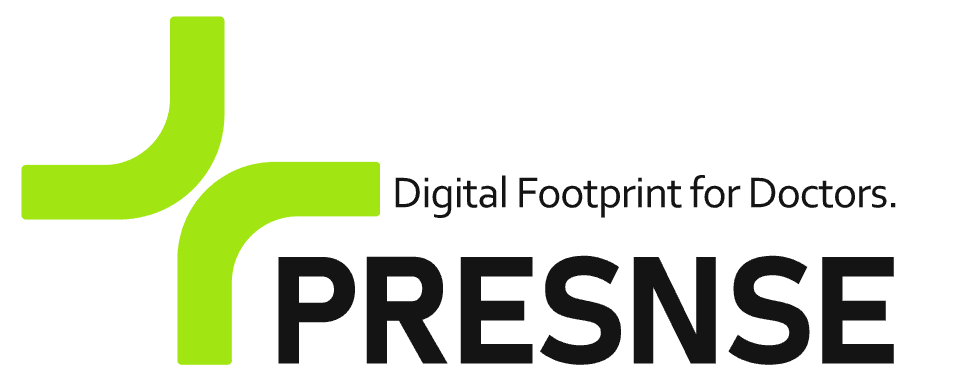Building Trust Online: The Role of Web Design in Establishing Credibility
Posted By
PRESNSE Community
Posted On
Aug 5, 2023



In the modern digital landscape, establishing trust through web design is more crucial than ever, especially for businesses looking to build credibility and engage effectively with their audience online. This article explores the role of web design in fostering trust, backed by SEO best practices and insights from high domain authority sources.
Importance of SEO and Web Design
Search Engine Optimization (SEO) is integral to web design as it not only enhances visibility on search engines but also improves user experience (UX). Google's search algorithms prioritize websites that offer a fast, secure, and user-friendly experience, which directly impacts a site's ability to attract and retain visitors (Info.gov.hk).
Mobile Optimization: A Necessity
With over 50% of global web traffic coming from mobile devices, ensuring your website is mobile-friendly is essential (Info.gov.hk). A responsive website adapts to any screen size, offering a seamless experience to users on smartphones, tablets, and desktops alike, which is critical in maintaining engagement and reducing bounce rates.
Building Credibility with Professional Design
A well-designed website reflects the professionalism of a business. Elements like a consistent color scheme, intuitive navigation, and high-quality graphics help in making a positive first impression. According to a study from Stanford University, 75% of consumers admit to making judgments about a company’s credibility based on its website design.
Trust Indicators in Web Design
Trust indicators such as SSL certificates, privacy policies, contact information, and customer testimonials are vital. Displaying these elements prominently reassures users of the legitimacy and safety of doing business with you. Including third-party endorsements or certifications can further enhance this trust.
Leveraging Analytics for User-Centric Design
Using tools like Google Analytics to understand user behavior on your site can help in tailoring the design to better meet the needs of your audience. Data-driven design decisions ensure that the website not only looks appealing but also aligns with the users' expectations and preferences, thereby boosting credibility and user engagement.
Conclusion
Effective web design is pivotal in establishing trust and credibility online. By prioritizing SEO, ensuring mobile responsiveness, maintaining a professional aesthetic, incorporating trust indicators, and utilizing analytics for design improvements, businesses can significantly enhance their digital presence and build lasting relationships with their audience.
References
By adhering to these practices, businesses not only improve their website's performance but also foster an environment of trust, which is essential for attracting and retaining customers in a competitive digital marketplace.
In the modern digital landscape, establishing trust through web design is more crucial than ever, especially for businesses looking to build credibility and engage effectively with their audience online. This article explores the role of web design in fostering trust, backed by SEO best practices and insights from high domain authority sources.
Importance of SEO and Web Design
Search Engine Optimization (SEO) is integral to web design as it not only enhances visibility on search engines but also improves user experience (UX). Google's search algorithms prioritize websites that offer a fast, secure, and user-friendly experience, which directly impacts a site's ability to attract and retain visitors (Info.gov.hk).
Mobile Optimization: A Necessity
With over 50% of global web traffic coming from mobile devices, ensuring your website is mobile-friendly is essential (Info.gov.hk). A responsive website adapts to any screen size, offering a seamless experience to users on smartphones, tablets, and desktops alike, which is critical in maintaining engagement and reducing bounce rates.
Building Credibility with Professional Design
A well-designed website reflects the professionalism of a business. Elements like a consistent color scheme, intuitive navigation, and high-quality graphics help in making a positive first impression. According to a study from Stanford University, 75% of consumers admit to making judgments about a company’s credibility based on its website design.
Trust Indicators in Web Design
Trust indicators such as SSL certificates, privacy policies, contact information, and customer testimonials are vital. Displaying these elements prominently reassures users of the legitimacy and safety of doing business with you. Including third-party endorsements or certifications can further enhance this trust.
Leveraging Analytics for User-Centric Design
Using tools like Google Analytics to understand user behavior on your site can help in tailoring the design to better meet the needs of your audience. Data-driven design decisions ensure that the website not only looks appealing but also aligns with the users' expectations and preferences, thereby boosting credibility and user engagement.
Conclusion
Effective web design is pivotal in establishing trust and credibility online. By prioritizing SEO, ensuring mobile responsiveness, maintaining a professional aesthetic, incorporating trust indicators, and utilizing analytics for design improvements, businesses can significantly enhance their digital presence and build lasting relationships with their audience.
References
By adhering to these practices, businesses not only improve their website's performance but also foster an environment of trust, which is essential for attracting and retaining customers in a competitive digital marketplace.
In the modern digital landscape, establishing trust through web design is more crucial than ever, especially for businesses looking to build credibility and engage effectively with their audience online. This article explores the role of web design in fostering trust, backed by SEO best practices and insights from high domain authority sources.
Importance of SEO and Web Design
Search Engine Optimization (SEO) is integral to web design as it not only enhances visibility on search engines but also improves user experience (UX). Google's search algorithms prioritize websites that offer a fast, secure, and user-friendly experience, which directly impacts a site's ability to attract and retain visitors (Info.gov.hk).
Mobile Optimization: A Necessity
With over 50% of global web traffic coming from mobile devices, ensuring your website is mobile-friendly is essential (Info.gov.hk). A responsive website adapts to any screen size, offering a seamless experience to users on smartphones, tablets, and desktops alike, which is critical in maintaining engagement and reducing bounce rates.
Building Credibility with Professional Design
A well-designed website reflects the professionalism of a business. Elements like a consistent color scheme, intuitive navigation, and high-quality graphics help in making a positive first impression. According to a study from Stanford University, 75% of consumers admit to making judgments about a company’s credibility based on its website design.
Trust Indicators in Web Design
Trust indicators such as SSL certificates, privacy policies, contact information, and customer testimonials are vital. Displaying these elements prominently reassures users of the legitimacy and safety of doing business with you. Including third-party endorsements or certifications can further enhance this trust.
Leveraging Analytics for User-Centric Design
Using tools like Google Analytics to understand user behavior on your site can help in tailoring the design to better meet the needs of your audience. Data-driven design decisions ensure that the website not only looks appealing but also aligns with the users' expectations and preferences, thereby boosting credibility and user engagement.
Conclusion
Effective web design is pivotal in establishing trust and credibility online. By prioritizing SEO, ensuring mobile responsiveness, maintaining a professional aesthetic, incorporating trust indicators, and utilizing analytics for design improvements, businesses can significantly enhance their digital presence and build lasting relationships with their audience.
References
By adhering to these practices, businesses not only improve their website's performance but also foster an environment of trust, which is essential for attracting and retaining customers in a competitive digital marketplace.

Ready to Elevate Your Digital Presence?
Don't get left behind
Join us on the journey to transform your digital landscape. Harness the power of PRESNSE expertise to boost your brand's visibility, engagement, and growth. Let's make your success story together!

Ready to Elevate Your Digital Presence?
Don't get left behind
Join us on the journey to transform your digital landscape. Harness the power of PRESNSE expertise to boost your brand's visibility, engagement, and growth. Let's make your success story together!

Ready to Elevate Your Digital Presence?
Don't get left behind
Join us on the journey to transform your digital landscape. Harness the power of PRESNSE expertise to boost your brand's visibility, engagement, and growth. Let's make your success story together!

Optimize your success with our ROI-driven digital marketing agency.
207, LT Tower, 31 Chong Yip St, Kwun Tong, Hong Kong
Copyright: © 2024 PRESNSE. All Rights Reserved.

Optimize your success with our ROI-driven digital marketing agency.
207, LT Tower, 31 Chong Yip St, Kwun Tong, HK
Copyright: © 2024 PRESNSE. All Rights Reserved.

Optimize your success with our AI driven digital marketing agency.
207, LT Tower, 31 Chong Yip St, Kwun Tong, Hong Kong
Copyright: © 2024 PRESNSE. All Rights Reserved.



